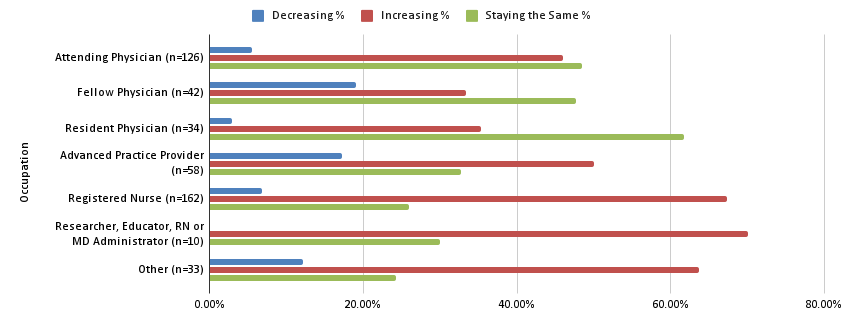Quality Improvement/Patient Safety 2
Session: Quality Improvement/Patient Safety 2
030 - Workplace Conflict in Healthcare: An Assessment of Reactions, Management Styles, and Resolution Strategies
Friday, April 25, 2025
5:30pm - 7:45pm HST
Publication Number: 30.7098
Alan L.. Nager, CHLA, Los Angeles, CA, United States; Sofia S. Cook, Children's Hospital Los Angeles, Los Angeles, CA, United States; Natalie Corrilo, Valley Community Healthcare, Burbank, CA, United States; Alana Epstein, Children's Hospital Los Angeles, Sherman Oaks, CA, United States; Phung K. Pham, The Lundquist Institute, Torrance, CA, United States

Alan L. Nager, MD, MHA (he/him/his)
Director, Emergency & Transport Medicine
Children's Hospital Los Angeles
Los Angeles, California, United States
Presenting Author(s)
Background: Workplace conflict is common in healthcare institutions and often arises from differences in goals, communication styles, resources and interests. Such conflict may lead to negative emotions, friction, discord, and reduced productivity, ultimately impacting staff well-being and patient care.
Objective: To assess the frequency, types, and impact of workplace conflict in a children’s hospital and to evaluate conflict management styles and resolution strategies used by healthcare personnel.
Design/Methods: A 5-part questionnaire consisting of 53 items was assembled by a Pediatric Emergency Physician and 2 resident trainees with consensus input from nurses, social workers and psychologists. Administered via Qualtrics to nurses, resident trainees, attending physicians, and other hospital personnel, the survey assessed perceived frequency of conflict, preferred strategies for conflict resolution, impacts on emotions and well-being, prior conflict education, and common counterparts in conflict (e.g., peers, supervisors, interprofessional colleagues). Participation was anonymous and voluntary. Data collection spanned 6 months, and IBM SPSS was used to run descriptive statistics and the chi-squared test.
Results: A total of 465 personnel completed the questionnaire (90% response rate). Of these, 58% had worked at the hospital >5 years. Collaborative conflict management (42%) was the most common style, with other styles and combinations shown in Fig 1. Over half (53%) perceived conflict as increasing in recent years (Fig 2). Registered nurses, researchers, educators, administrators, and some other hospital personnel tended to perceive conflict as increasing over time, while advanced practice providers and fellow physicians reported a decrease; attendings and residents observed stability over time (p < 0.001; adjusted z-scores >2.15). Conflicts were frequently reported with parents/families (41.5%); and interprofessional colleagues (27%). Common emotional responses included stress (37%), burnout (37%), job dissatisfaction (38%), and depression (23%). Preferred conflict resolution strategies included counseling/supportive coaching and team-building workshops (Fig 3).
Conclusion(s): Conflict affects healthcare personnel in numerous ways, including well-being, mental health and job satisfaction, with ripple effects on patient care, team cohesion and organizational goals. Systemic support through conflict resolution training, peer-support and team-building initiatives is essential for mitigating these impacts and promoting a resilient healthcare workforce.
Figure 1
.png) Frequencies and Percentages of Conflict Management Styles and Combinations at a Children's Hospital
Frequencies and Percentages of Conflict Management Styles and Combinations at a Children's HospitalFigure 2
 Perceptions of Conflict Over Time Across Different Groups of Children's Hospital Personnel
Perceptions of Conflict Over Time Across Different Groups of Children's Hospital PersonnelFigure 3
.png) Preferred Conflict Resolution Strategies and Proportions of Interest
Preferred Conflict Resolution Strategies and Proportions of Interest
